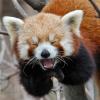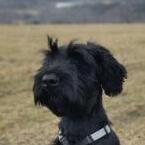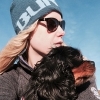-
Hvem er aktive 0 medlemmer
- Ingen innloggede medlemmer aktive
-
Nye innlegg
-
Usikker på om massiv fremgang i hverdagslydighet skyldes endring av metode, økt mental modenhet med mer impulskontroll, "varmen" (ikke veldig), eller en kombinasjon, men vi koser oss. Ikke en lyd på verken bussen, Posten eller Felleskjøpet i dag. Ble helt rørt av hvor flink han var til å sitte pent og pyntelig og vente uten labber på disken eller konsert. Å manøvrere pent mellom hyller med leker og tygg og snacks var deilig nok. Måtte nesten klype meg i armen da han bare var lydig ved disken også, begge steder. Det kom noen raptusbyks da vi nærmet oss hjemme igjen, men kjapt under kontroll med cue på en øvelse og en leke, og da det i neste øyeblikk kom et helt heat av saftige skinker i kondomdress på hjul - bakfra - bare en meter fra oss, så satt han bare pent og pyntelig og så på de fly forbi uten impulser til å jage etter for å bite noen i rumpa. Amazing! Godgutten 🥰
-
Eurasier er en selvstendig rase, og den krever en del aktivisering, på sine premisser. De har også hatt en del svakheter mentalt. Dette med usikkerhet er i høy grad genetisk, så det er viktig å gjøre god research på oppdrettere og linjer. God sosialisering er selvfølgelig også viktig, men eurasier er ikke en utpreget sosial rase. Når det gjelder "gneldring" så er det svært få hunder som gneldrer uten mål og mening så lenge de får den aktiviteten de trenger. Men noen raser er avlet for å vokte eller varsle, og de vil naturlig nok bjeffe når de opplever forstyrrelser, og terskelen der kan variere. Mange små hunder er avlet for å varsle, mens jeg kommer ikke på så mange store hunder (type str eurasier) som er kjent for å "gneldre". Noen spisshunder, som lapphundene, islandsk fårehund mm. kan bjeffe en del i arbeid og når de blir ivrige. Eurasier er forøvrig også en spisshund og ikke nødvendigvis helt stille. Om det er en rase som passer deg eller ikke er vanskelig å si, siden du ikke sier noe annet enn at du bor i leilighet. Skal du ha hund til tur og kos? Vil du gå kurs, og evt. drive med hundesport? Er det viktig at den går overens med andre hunder? Lett å trene/ha løs? Hvor mye tid vil du bruke på pelsstell og støvsuging? Anbefaler å lese litt her, andre innlegg fra samme bruker på forumet, som har hatt en eurasier med sine utfordringer, men også kommet veldig langt med ham:
-
Vurderer eurasier som neste hund, og ønsker å høre fra alle som har om både positive sider og utfordringer, anbefaling/fraråding av rasen. Hannhund eller tispe? Tisper er jo mindre, men da må en ta med løpetid og humørsvingninger med det etc. Hannhunder er kanskje mer stabil i humøret? Men samtidig større og mer 'territorielle? Er jo pluss og minus på begge sider. Bur idag I leilighet, liker og gå turer, men har ikke behov for en høyaktiv rase, ønsker heller ikke ha så liten da de har en tendens til og være gneldrete. Og lest og hørt at Eurasier er ganske stille på det punktet. Selv om de lager lyd selfølgelig, det er naturlig, men ønsker ikke sånn typisk gneldring. Men blir jo litt usikker når en leser at de kan bli veldig skeptisk/nervøs til andre, en vil jo ikke 'feile' med hunden en skal få, ønsker jo velge riktig da det skal fungere i mange år fremover. Kommer alltid tilbake til Eurasier da, falt litt for de, men har aldri hatt den type rase før. Har hatt labrador blanding, og spaniel før og de er jo litt mer førerorienterte. Er det sånn at en må trene sosialisering i typ '3 til 4' timer hver dag eller holder det med 'minutter' noen dager, det vil jo variere dager da man må jobbe etc sef. Blir jo sef mer enn noen minutter, men håper dere skjønner hva eg mener🙈
-
Aha, takk for utfyllende svar! Kanskje jeg skal prøve ut dibaq da, gir diverse brusk som tygg så det burde gå fint. Eller prøve med farmina. Dyrere for, men man gir vel kanskje mindre mengder av det? Valpen her vokste enormt fort på vom, men vet jo ikke om det var pga. maten eller tilfeldig, valper vokser jo fort. Var såpass at hundeluftere i nabolaget kommenterte på veksten 😅
-
Dibaq, ja. Jeg er godt fornøyd med kombinasjonen av pris og kvalitet, med unntak av manglende kondroitinsulfat. Det er noe de fleste for (inkludert mer kjente og anerkjente for som Vom og Alpha Spirit) har altfor lite av. Stoffet finnes rikelig i brusk, så gir tilskudd av rå frosset eller tørket hals/føtter fra kylling/kalkun og ører/haler fra diverse dyr for å kompensere. Ellers er jeg veldig begeistret for Farmina, men en må være litt forsiktig for å unngå voldsom vekst av det. Min fikk en skremmende, massiv growth spur da jeg foret bare på det en ukes tid. Skjøt i været og la på seg. Veldig høy næringstetthet og kaloririkt, så lite slingringsmonn før det blir for mye av det. Pga DCM-skandalen i forbindelse med kornfrie for, hvor det å fore på f.eks. Acana -ansett som et premium høykvalitetsfor, rost opp i skyene for kvaliteten - medførte strukturell hjertefeil på en mengde hunder, så har jeg valgt å kombinere flere ulike typer for å gardere meg bedre dersom det i ettertid skulle vise seg å ha vært noe gærnt med noen av dem. Farmina har kornfrie varianter, til forveksling lik skandaleforene, men har også tilstrekkelig med carnitin/taurin/metionin, og de inneholder ikke hele belgfrukter eller belgfruktproteiner - mistenkt for å være anti næringsstoffer som hemmer opptak eller syntese av andre aminosyrer og proteiner. Farmina inneholder kun stivelsen fra erter, og ekstrahert og isolert stivelse skal være bare stivelse, uavhengig av om det kommer fra hvete, ris eller erter. Nødvendig for å kunne holde de andre ingrediensene bundet sammen til kibble. Om den voksne hunden ender på perfekt størrelse med perfekt leddet perfekt skjelett, perfekte organer og perfekt pels vet jeg jo ikke ennå, men avføringen er ihvertfall perfekt :)
-
-
Nylig opprettede emner




Recommended Posts
Arkivert
Dette emnet er nå arkivert og stengt for flere svar